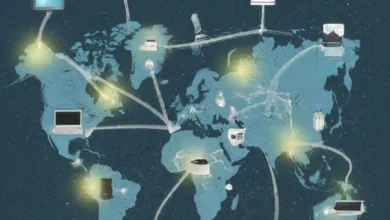The Metaverse: The Future of Virtual Worlds

The metaverse is poised to transform the way we interact digitally. This emerging virtual space has the potential to revolutionize gaming, social media, workplaces, events, and more. This article will examine what comprises the metaverse, current platforms, and use cases, and how virtual worlds may evolve.
What is the Metaverse?
The metaverse refers to a network of virtual 3D worlds focused on social connection. Users can interact with digital content and other users in a shared virtual space. It is an immersive version of the internet accessed via augmented and virtual reality headsets. Key components include:
- Persistent virtual worlds – 3D virtual environments that continue to exist even when users are not actively signed in.
- Avatar representations – Users customize virtual avatars to represent their in-world identity.
- Real-time interaction – Users can engage in real-time communication and collaboration.
- Virtual economy – Blockchain, cryptocurrency, and NFTs enable virtual economic transactions.
- Cross-platform capabilities – Content and digital assets can be transferred across metaverse environments.

Current Metaverse Platforms and Use Cases
Though still in its early stage, there are several existing metaverse platforms today with real-world applications:
Gaming
- Fortnite – Popular multiplayer game with innovative modes like virtual concerts and movie screenings attended by millions of players.
- Roblox – Gaming platform with immersive 3D worlds created by users. Popular with younger audiences.
- Microsoft Mesh – Enables collaborative holographic experiences on HoloLens and VR devices.
Social Interaction
- VRChat – Social VR platform for users to engage as customized avatars in virtual locations.
- Facebook Horizon – VR social space where users can explore, play games, and create worlds together.
- AltspaceVR – Virtual meeting space for attending events, meetups, and interactive activities.
Workplace Collaboration
- Spatial – Web-based AR/VR platform for distributed teams to collaborate on 3D prototypes and designs.
- Immersed – Enables users to access their desktops and apps in an enterprise VR environment.
- MeetinVR – Virtual meeting solution for interactive collaboration, presentations, and brainstorming.
Events and Entertainment
- VRConcert – Hosts live performances and music festivals in a shared virtual venue.
- Mozilla Hubs – Web-based platform for creating virtual 3D spaces for gatherings and events.
The Metaverse Future – How Virtual Worlds Will Evolve
Though many conceptualize the metaverse as a single, universal virtual world, it is more likely to manifest as an interconnected network of virtual spaces accessed through different platforms and devices. As AR and VR technology matures, here are some ways virtual worlds may evolve:
More Immersive Digital Experiences
VR/AR headsets will become higher-resolution, wireless and more accessible. This will enable seamless blending of virtual and physical worlds. Input methods like haptics and hand tracking will provide greater immersion.
Expanded Creation and Personalization
Users will have tools to craft highly personalized avatars, virtual possessions, and in-world content. AI could assist with creation. Blockchain will enable true digital ownership and transferability of virtual goods.
Integration with the Physical World
The metaverse will bridge digital and physical worlds. For example, purchasing physical products through virtual marketplaces, or digitizing real-world venues for virtual events. Location-based AR will integrate the metaverse with the physical environment.
New Ways to Socialize and Collaborate
Real-time collaboration tools will enable distributed teams to interact seamlessly. Shared virtual offices and campuses will redefine remote work. New metaverse social networks will emerge based on 3D worlds and alternate identities.
Emerging Virtual Economy and Jobs
Virtual jobs, businesses, and economies will grow around user creations, NFTs, cryptocurrency transactions, virtual real estate, advertising, and services needed to maintain metaverse platforms. This mirrors how the real-world economy emerged around the internet.
Metaverse FAQs
What hardware is needed to access the metaverse?
Currently, experiencing immersive metaverse environments requires relatively expensive hardware like high-end VR headsets and powerful PCs. As the technology evolves, more accessible and mobile AR/VR devices will enable mass adoption.
Will users need special skills or training?
As with any new technology, there will be a learning curve. Digital literacy and avatar personalization skills may need development. Controls and norms around interpersonal interaction in virtual spaces will evolve.
How will identity work in an anonymous virtual world?
Anonymous identities could enable positive exploration but also antisocial behaviors. Expect mechanisms like blockchain-verified credentials and reputation scores based on in-world behaviors to emerge as a form of identity verification.
Can virtual goods purchased be resold outside platforms?
Blockchain will enable proof of ownership and transferability for virtual goods. However, platform-specific tokens will likely dominate virtual transactions to start. Real-world value may be limited.
Will there be guidelines for advertising in the metaverse?
As virtual worlds grow in popularity, expect platforms to impose standards around placement and types of advertising. Data privacy concerns may also limit how user data can be used for targeting. Regulation will be required.
The metaverse represents an exciting new digital frontier! While still evolving, it promises to transform how we interact in virtual spaces for work, play, collaboration, and more. The coming years will reveal the full potential.





